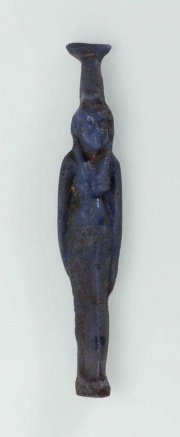Difference between revisions of "Blue glass"
Jump to navigation
Jump to search
m (Text replace - "== Authority ==" to "== Sources Checked for Data in Record ==") |
|||
| Line 1: | Line 1: | ||
| − | [[File:65.1743-SC102413.jpg|thumb|]] | + | [[File:65.1743-SC102413.jpg|thumb|Amulet of Nephthys<br>MFA# 65.1743]] |
== Description == | == Description == | ||
| Line 10: | Line 10: | ||
vidrio azul (Esp.); vidro azul (Port.) | vidrio azul (Esp.); vidro azul (Port.) | ||
| − | == | + | ==Resources and Citations== |
* ''Dictionary of Building Preservation'', Ward Bucher, ed., John Wiley & Sons, Inc., New York City, 1996 | * ''Dictionary of Building Preservation'', Ward Bucher, ed., John Wiley & Sons, Inc., New York City, 1996 | ||
| − | * ''Encyclopedia Britannica'', http://www.britannica.com Comment: "glassware" | + | * ''Encyclopedia Britannica'', http://www.britannica.com Comment: "glassware" [Accessed May 5, 2004]. |
[[Category:Materials database]] | [[Category:Materials database]] | ||
Latest revision as of 15:38, 8 May 2022
Description
Several colorants are used to make blue glass. Cobalt oxide produces a vivid blue glass. Cupric oxide produces a paler, sky blue color. when cupric oxide is mixed with Lead, Boron, or Titanium, a brighter, greenish-blue hue is obtained.
See also Cobalt glass.
Synonyms and Related Terms
vidrio azul (Esp.); vidro azul (Port.)
Resources and Citations
- Dictionary of Building Preservation, Ward Bucher, ed., John Wiley & Sons, Inc., New York City, 1996
- Encyclopedia Britannica, http://www.britannica.com Comment: "glassware" [Accessed May 5, 2004].
